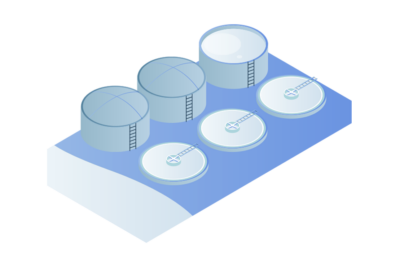Water Treatment Plants
Continuous monitoring of common hazardous gases found in waste water treatment plants
A waste water treatment facility is a wet maze of rooms, pipes, pumps, wells, chambers, concrete tanks and settling basins. Each treatment stage the waste water goes through involves hazardous gases that may already be present, are produced, or are added to complete the process.
The most common gases found in this type of facility are hydrogen sulphide, methane, ammonia, carbon monoxide, chlorine and oxygen deficiency. Some facilities might also use ozone, chlorine dioxide or sodium hypochlorite with the chlorine during the sanitization process and sulphur dioxide is often used at the end to de-chlorinate the water.
To ensure the safety of the workers, equipment and facility, every area presenting a gas hazard should be monitored, including the gas storage rooms, ozone generator room and any room that gas passes through. In the larger, open areas, a fixed gas detection system is suitable; in confined spaces that operators enter and where gas may be present, portable gas detectors are more appropriate.


